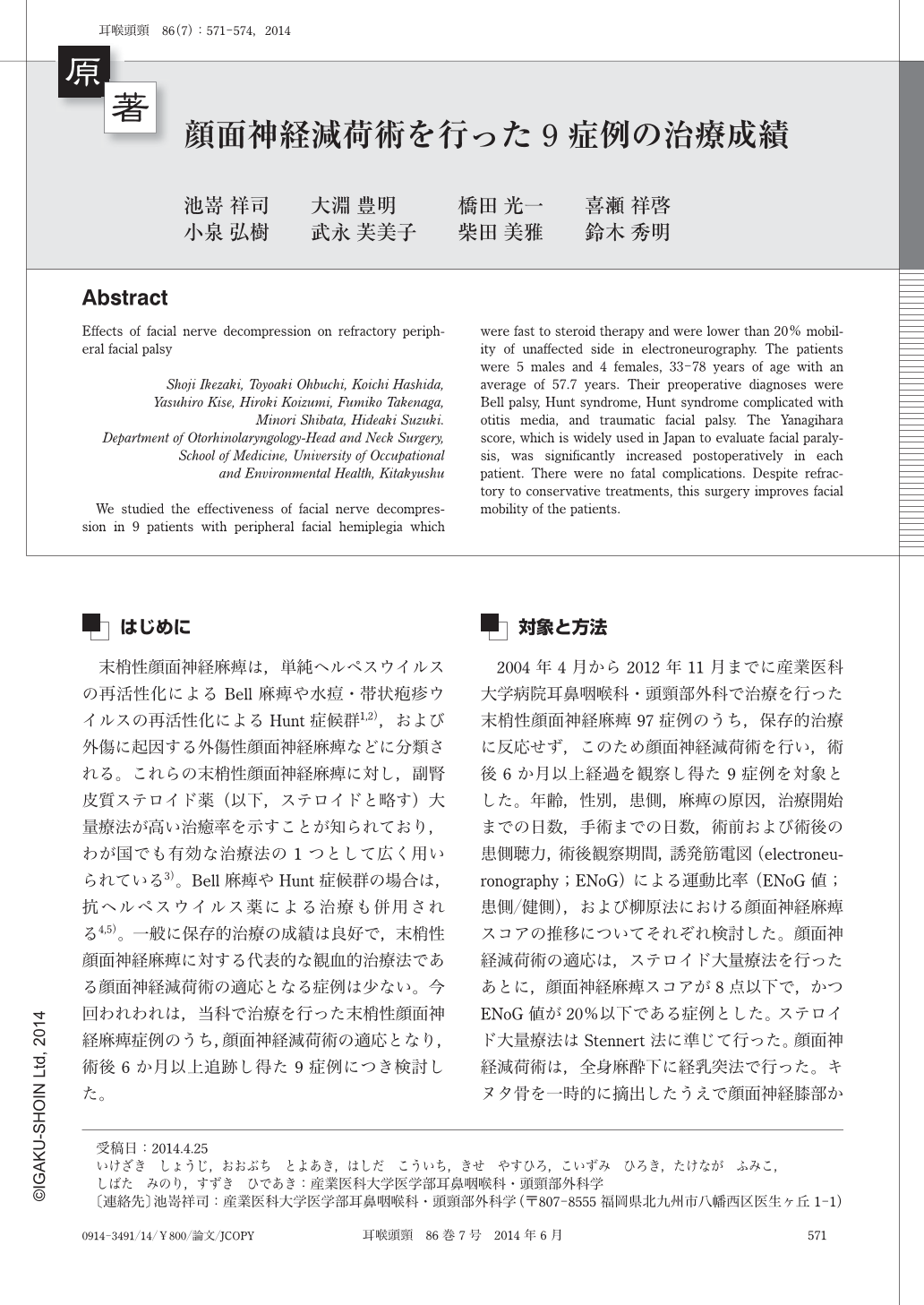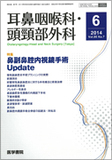Japanese
English
- 有料閲覧
- Abstract 文献概要
- 1ページ目 Look Inside
- 参考文献 Reference
はじめに
末しょう性顔面神経麻痺は,単純ヘルペスウイルスの再活性化によるBell麻痺や水痘・帯状疱疹ウイルスの再活性化によるHunt症候群1,2),および外傷に起因する外傷性顔面神経麻痺などに分類される。これらの末しょう性顔面神経麻痺に対し,副腎皮質ステロイド薬(以下,ステロイドと略す)大量療法が高い治癒率を示すことが知られており,わが国でも有効な治療法の1つとして広く用いられている3)。Bell麻痺やHunt症候群の場合は,抗ヘルペスウイルス薬による治療も併用される4,5)。一般に保存的治療の成績は良好で,末しょう性顔面神経麻痺に対する代表的な観血的治療法である顔面神経減荷術の適応となる症例は少ない。今回われわれは,当科で治療を行った末しょう性顔面神経麻痺症例のうち,顔面神経減荷術の適応となり,術後6か月以上追跡し得た9症例につき検討した。
We studied the effectiveness of facial nerve decompression in 9 patients with peripheral facial hemiplegia which were fast to steroid therapy and were lower than 20% mobility of unaffected side in electroneurography. The patients were 5 males and 4 females, 33-78 years of age with an average of 57.7 years. Their preoperative diagnoses were Bell palsy, Hunt syndrome, Hunt syndrome complicated with otitis media, and traumatic facial palsy. The Yanagihara score, which is widely used in Japan to evaluate facial paralysis, was significantly increased postoperatively in each patient. There were no fatal complications. Despite refractory to conservative treatments, this surgery improves facial mobility of the patients.

Copyright © 2014, Igaku-Shoin Ltd. All rights reserved.


